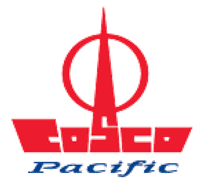
COSCO SHIPPING Ports Ltd
HKEX:1199


| US |

|
Johnson & Johnson
NYSE:JNJ
|
Pharmaceuticals
|
| US |

|
Berkshire Hathaway Inc
NYSE:BRK.A
|
Financial Services
|
| US |

|
Bank of America Corp
NYSE:BAC
|
Banking
|
| US |

|
Mastercard Inc
NYSE:MA
|
Technology
|
| US |

|
UnitedHealth Group Inc
NYSE:UNH
|
Health Care
|
| US |

|
Exxon Mobil Corp
NYSE:XOM
|
Energy
|
| US |

|
Pfizer Inc
NYSE:PFE
|
Pharmaceuticals
|
| US |

|
Palantir Technologies Inc
NYSE:PLTR
|
Technology
|
| US |

|
Nike Inc
NYSE:NKE
|
Textiles, Apparel & Luxury Goods
|
| US |

|
Visa Inc
NYSE:V
|
Technology
|
| CN |

|
Alibaba Group Holding Ltd
NYSE:BABA
|
Retail
|
| US |

|
3M Co
NYSE:MMM
|
Industrial Conglomerates
|
| US |

|
JPMorgan Chase & Co
NYSE:JPM
|
Banking
|
| US |

|
Coca-Cola Co
NYSE:KO
|
Beverages
|
| US |

|
Walmart Inc
NYSE:WMT
|
Retail
|
| US |

|
Verizon Communications Inc
NYSE:VZ
|
Telecommunication
|
Utilize notes to systematically review your investment decisions. By reflecting on past outcomes, you can discern effective strategies and identify those that underperformed. This continuous feedback loop enables you to adapt and refine your approach, optimizing for future success.
Each note serves as a learning point, offering insights into your decision-making processes. Over time, you'll accumulate a personalized database of knowledge, enhancing your ability to make informed decisions quickly and effectively.
With a comprehensive record of your investment history at your fingertips, you can compare current opportunities against past experiences. This not only bolsters your confidence but also ensures that each decision is grounded in a well-documented rationale.
Do you really want to delete this note?
This action cannot be undone.

| 52 Week Range |
4.08
5.82
|
| Price Target |
|
We'll email you a reminder when the closing price reaches HKD.
Choose the stock you wish to monitor with a price alert.

|
Johnson & Johnson
NYSE:JNJ
|
US |

|
Berkshire Hathaway Inc
NYSE:BRK.A
|
US |

|
Bank of America Corp
NYSE:BAC
|
US |

|
Mastercard Inc
NYSE:MA
|
US |

|
UnitedHealth Group Inc
NYSE:UNH
|
US |

|
Exxon Mobil Corp
NYSE:XOM
|
US |

|
Pfizer Inc
NYSE:PFE
|
US |

|
Palantir Technologies Inc
NYSE:PLTR
|
US |

|
Nike Inc
NYSE:NKE
|
US |

|
Visa Inc
NYSE:V
|
US |

|
Alibaba Group Holding Ltd
NYSE:BABA
|
CN |

|
3M Co
NYSE:MMM
|
US |

|
JPMorgan Chase & Co
NYSE:JPM
|
US |

|
Coca-Cola Co
NYSE:KO
|
US |

|
Walmart Inc
NYSE:WMT
|
US |

|
Verizon Communications Inc
NYSE:VZ
|
US |
This alert will be permanently deleted.
 COSCO SHIPPING Ports Ltd
COSCO SHIPPING Ports Ltd
COSCO SHIPPING Ports Ltd
Investor Relations
COSCO SHIPPING Ports Ltd., a subsidiary of the China COSCO Shipping Corporation, emerges as a global leader in the seaport industry, weaving an extensive network across continents. The company operates as a linchpin in the logistical realm, primarily focusing on the development, management, and operation of ports and terminals worldwide. This network spans from the bustling ports of Asia to key nodes in Europe and beyond, strategically positioning COSCO to efficiently facilitate international trade. Their operations hinge on the ownership and leasing of terminals, where they provide crucial services such as cargo handling, storage, and the management of critical logistical chains. As global trade expands, COSCO SHIPPING Ports ensures that containers flow seamlessly, fueling economies and connecting businesses across the globe.
The business model of COSCO SHIPPING Ports is intricately tied to the ripples of global trade. Revenue flows from multiple streams, including the leasing and management of terminal facilities, as well as value-added services that enhance supply chain efficiency. By leveraging economies of scale, the company maximizes throughput and optimizes logistics to improve profitability. Its strategy involves not just expanding geographical presence, but also integrating technology to enhance operational efficiency. By aligning with global shipping alliances and enhancing port infrastructure, COSCO SHIPPING Ports carves out a competitive edge in facilitating the ever-increasing demands of global commerce. As the lifeblood of trade arteries, the company's success is interwoven with the complexities and ever-evolving dynamics of global markets.

COSCO SHIPPING Ports Ltd., a subsidiary of the China COSCO Shipping Corporation, emerges as a global leader in the seaport industry, weaving an extensive network across continents. The company operates as a linchpin in the logistical realm, primarily focusing on the development, management, and operation of ports and terminals worldwide. This network spans from the bustling ports of Asia to key nodes in Europe and beyond, strategically positioning COSCO to efficiently facilitate international trade. Their operations hinge on the ownership and leasing of terminals, where they provide crucial services such as cargo handling, storage, and the management of critical logistical chains. As global trade expands, COSCO SHIPPING Ports ensures that containers flow seamlessly, fueling economies and connecting businesses across the globe.
The business model of COSCO SHIPPING Ports is intricately tied to the ripples of global trade. Revenue flows from multiple streams, including the leasing and management of terminal facilities, as well as value-added services that enhance supply chain efficiency. By leveraging economies of scale, the company maximizes throughput and optimizes logistics to improve profitability. Its strategy involves not just expanding geographical presence, but also integrating technology to enhance operational efficiency. By aligning with global shipping alliances and enhancing port infrastructure, COSCO SHIPPING Ports carves out a competitive edge in facilitating the ever-increasing demands of global commerce. As the lifeblood of trade arteries, the company's success is interwoven with the complexities and ever-evolving dynamics of global markets.





























 You don't have any saved screeners yet
You don't have any saved screeners yet
